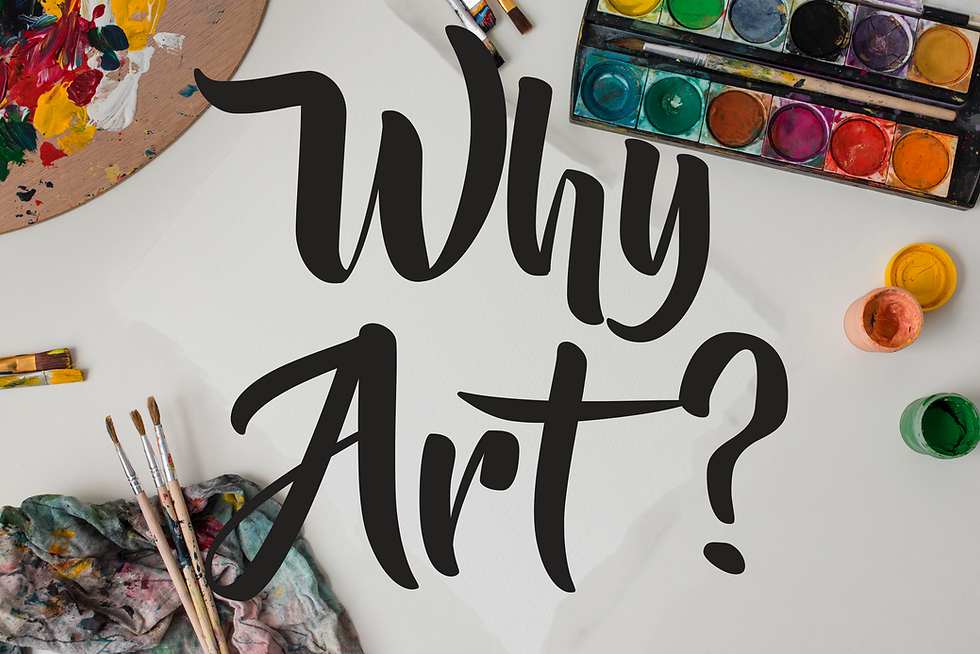Deepening Art Education With 6 Questions
- Hope Creek Studios

- Apr 25
- 3 min read
Updated: Aug 12

As an art educator, I am always looking for ways to help students not only create but truly engage with the creation of a piece of artwork. It’s not just about making something visually appealing—it’s about understanding why and how artists work, what choices they make, and how materials, techniques, and vision come together to make something meaningful. I try to keep in mind these questions as I do my planning:
1. How can students gain a greater understanding of a particular element of art in this project?
Every project is an opportunity to focus on a fundamental element of art—line, shape, color, texture, form, value, or space. If the goal is to emphasize color, for example, I might design an activity inspired by Vincent van Gogh, where students explore how color conveys mood and movement. If the focus is on line, I might introduce a warm-up where students create landscapes with 3 or 4 lines before moving on to a final landscape.
2. How can students more fully appreciate the pieces by a master artist?
The process of studying master artists goes beyond simply looking at their work. I encourage students to examine brushstrokes, layering techniques, and composition choices. For example, when working on a mosaic project inspired by Ancient Greece and Rome, students observed how tesserae were arranged to create fluid designs and realistic shading. This analysis gave them a deeper appreciation for the time and skill involved.
3. How can students realize expertise in the use of certain mediums?
Working with different mediums is essential to developing artistic skill. Many students assume mastery comes from talent alone, but when they see how an artist spent years refining a technique, they gain a new respect for practice. If we are studying watercolor, I’ll have students explore different technique methods before moving into a final piece.
4. How can students gain experience with the same or similar medium as the artist they’re studying?
Hands-on experience with an artist’s chosen medium makes their work feel more tangible and real. When we build sculpture, we use clay. When we study a Renaissance portrait, we try our hand at mixing paint colors, and so forth.
5. What artistic visions or thought processes do I want my students to replicate?
Art is not just about the final product—it’s about how an artist sees and interprets the world. I try to encourage this mindset by choosing projects that push students to think through composition, symbolism, and storytelling. When studying a particular artist, we discuss their artistic philosophy and what drove their work.
6. How can I create opportunities for my students to practice techniques used by a master artist?
Some techniques take patience and discipline to master, and I love designing exercises that give students a taste of that process. Whether it's practicing hatching and cross-hatching for a pen-and-ink study, layering paint for depth, or carefully cutting and placing pieces for a collage, these small moments of skill-building add up over time. I want students to feel the satisfaction of refining a technique and seeing their own progress.
The Goal: A Deeper Artistic Experience
By purposely addressing and incorporating these questions into my lesson planning, I aim to create a classroom environment where students aren’t just making art—they’re thinking, experimenting, and growing in appreciation for the craft. Whether we’re studying the past or exploring contemporary works, I want my students to develop an eye for detail, a respect for the creative process, and the confidence to explore their own artistic voices.

©2025HopeCreekStudios





Comments